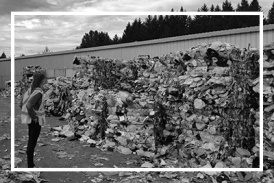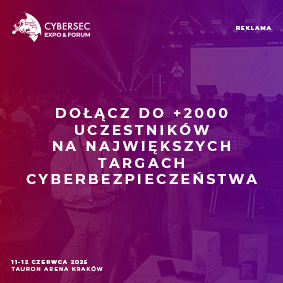Thor Dynamics Unveils Powerful Update to Laser Armor: Enhanced AI and Laser Capabilities for Counter-Swarm Drone Defense
Next-Generation Update Delivers Faster Targeting, Higher Throughput, and Expanded Protection Against Coordinated Drone Attacks
Laser Armor™ integrates high-energy laser technology with advanced AI — now featuring Reinforcement Learning (RL) algorithms that enable the system to optimize performance in real time, even under complex, rapidly evolving threat conditions. The upgrade also includes improved multi-target engagement, faster fire control, and smarter threat classification.
This leap in capability is powered in part by Thor Dynamics’ deep partnership with NVIDIA, which provides state-of-the-art GPU acceleration and edge computing infrastructure. Leveraging the NVIDIA Jetson and RTX platforms, Laser Armor™ can process vast sensor data streams, run advanced neural models at the edge, and make split-second targeting decisions with battlefield-grade reliability.
The Growing Threat of Drone Swarms
Drone swarms pose an escalating threat to national security, critical infrastructure, and military assets. Cheap, expendable drones can now be launched in coordinated formations to overwhelm radar, saturate defenses, and strike from multiple vectors simultaneously. This evolving threat demands a new class of autonomous, scalable countermeasure — one that can think, adapt, and strike back in real time.
Laser Armor™ meets this challenge with a software-defined defense architecture capable of continuous engagement and real-time learning. With the integration of Reinforcement Learning and accelerated AI inference, the system becomes more effective the more it operates — learning from each scenario to improve decision-making and threat prioritization.
Why Lasers Lead the Fight Against Swarms
Directed energy, and lasers specifically, are uniquely suited to swarm defense. Unlike kinetic systems, which rely on physical interceptors and reloading logistics, lasers deliver speed-of-light precision, virtually unlimited shots, and extremely low cost per engagement. They operate silently and without collateral damage, making them ideal for protecting civilian infrastructure, energy facilities, and populated environments.
With its AI-driven command stack, Laser Armor™ autonomously manages shot sequencing, engagement angles, and power allocation — neutralizing multiple fast-moving threats in parallel. Reinforcement Learning further enhances the system’s adaptability, enabling it to respond more intelligently to unexpected attack patterns or novel drone behaviors.
Scalable, Affordable, Ready Now
Thor Dynamics has engineered Laser Armor™ for mass production, rapid deployment, and cross-domain adaptability. Its modular architecture supports air, ground, and fixed-site configurations, enabling coverage across military installations, airports, power plants, and other high-value targets.
Laser Armor™ is currently undergoing expanded field testing with select government and commercial partners in the U.S. and Europe. Early results confirm its unmatched effectiveness against next-gen drone swarm threats in real-world conditions.
To learn more about Laser Armor™, request a live demo, or explore partnership opportunities, visit www.thordynamics.com.
About Thor Dynamics
Headquartered in Orlando, Florida, with a European base in Finland, Thor Dynamics develops advanced directed energy systems purpose-built for counter-drone and counter-swarm defense. Through deep partnerships with industry leaders like NVIDIA, Thor harnesses the latest in AI and high-performance computing to protect global infrastructure and national security in the age of autonomous threats.
Gleb Chuvpilo
Thor Dynamics
email us here
Visit us on social media:
LinkedIn
Legal Disclaimer:
EIN Presswire provides this news content "as is" without warranty of any kind. We do not accept any responsibility or liability for the accuracy, content, images, videos, licenses, completeness, legality, or reliability of the information contained in this article. If you have any complaints or copyright issues related to this article, kindly contact the author above.
COMMUNITY SECURITY SERVICE BOLSTERS DEFENSES IN RESPONSE TO ELEVATED THREAT WARNING FROM DHS/FBI
From Messy Moments to Meaningful Memories: 'Once Upon an Amateur Mom' is a Tribute to Mothers Everywhere
Ralph Caruso’s Above The Line Production Rentals Celebrates 10 Years of Growth as Key Supplier to Top Film Productions
Kalendarium
Więcej ważnych informacji
 Jedynka Newserii
Jedynka Newserii

 Jedynka Newserii
Jedynka Newserii

Handel

Ze względu na różnice w cenach surowce wtórne przegrywają z pierwotnymi. To powoduje problemy branży recyklingowej
Rozporządzenie PPWR stawia ambitne cele w zakresie wykorzystania recyklatów w poszczególnych rodzajach opakowań. To będzie oznaczało wzrost popytu na materiały wtórne pochodzące z recyklingu. Obecnie problemy branży recyklingu mogą spowodować, że popyt będzie zaspokajany głównie przez import. Dziś do dobrowolnego wykorzystania recyklatów nie zachęcają przede wszystkim ceny – surowiec pierwotny można kupić taniej niż ten z recyklingu.
Przemysł spożywczy
Rośnie presja konkurencyjna na unijne rolnictwo. Bez rekompensat sytuacja rolników może się pogarszać

Rolnictwo i żywność, w tym rybołówstwo, są sektorami strategicznymi dla UE. System rolno-spożywczy, oparty na jednolitym rynku europejskim, wytwarza ponad 900 mld euro wartości dodanej. Jego konkurencyjność stoi jednak przed wieloma wyzwaniami – to przede wszystkim eksport z Ukrainy i niedługo także z krajów Mercosur, a także presja związana z oczekiwaniami konsumentów i Zielonym Ładem. Bez rekompensat rolnikom może być trudno tym wyzwaniom sprostać.
Transport
Infrastruktury ładowania elektryków przybywa w szybkim tempie. Inwestorzy jednak napotykają szereg barier

Liczba punktów ładowania samochodów elektrycznych wynosi dziś ok. 10 tys., a tempo wzrostu wynosi ok. 50 proc. r/r. Dynamika ta przez wiele miesięcy była wyższa niż wyniki samego rynku samochodów elektrycznych, na które w poprzednim roku wpływało zawieszenie rządowych dopłat do zakupu elektryka. Pierwszy kwartał br. zamknął się 22-proc. wzrostem liczby rejestracji w ujęciu rocznym, ale kwiecień przyniósł już wyraźne odbicie – o 100 proc.
Partner serwisu
Szkolenia

Akademia Newserii
Akademia Newserii to projekt, w ramach którego najlepsi polscy dziennikarze biznesowi, giełdowi oraz lifestylowi, a także szkoleniowcy z wieloletnim doświadczeniem dzielą się swoją wiedzą nt. pracy z mediami.









.gif)

 |
| |
| |
|